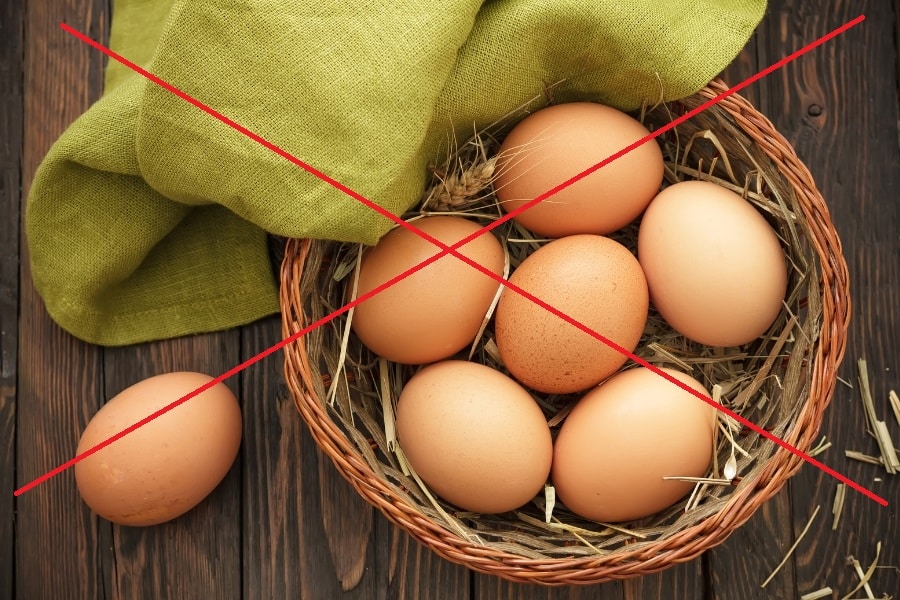Seasonal eating is a key component of a healthy vegan lifestyle, offering a variety of benefits ranging from enhanced nutritional intake to environmental sustainability. By aligning food choices with the natural harvest cycles, vegans can enjoy fresher, more flavorful produce, often at a lower cost and with a smaller carbon footprint. This guide delves into how to make the most of seasonal produce, ensuring a diverse and nutritious diet throughout the year. It serves as a comprehensive tool for those looking to enrich their vegan diet with the best each season has to offer.
Contents
- 1 Understanding Seasonal Produce
- 2 Winter Wonders: Nourishing Choices In The Cold
- 3 Spring Into Health: Fresh Picks For Warmer Weather
- 4 Summer Harvest: Making The Most Of The Bounty
- 5 Autumn Abundance: Transitioning With The Season
- 6 Year-Round Staples: Your Vegan Pantry Essentials
- 7 Eating Locally And Sustainably
- 8 The Bottom Line
- 9 Related
Understanding Seasonal Produce

Seasonal eating involves selecting fruits, vegetables, grains, and legumes that are naturally harvested at specific times of the year. This practice not only guarantees peak freshness and optimal nutrient content but also supports local farming communities. For vegans, understanding which produce is in season can transform the way one approaches meal planning and grocery shopping. This awareness ensures a continually changing diet that remains both exciting and nutritionally balanced.
One of the biggest challenges of seasonal eating is knowing what’s in season, especially in different regions. Climate and geographical location play significant roles in determining local harvest times. It’s crucial to familiarize oneself with regional seasonal produce charts, which are often available online or at local farmers’ markets. Embracing seasonality means occasionally stepping out of one’s comfort zone to try new, perhaps unfamiliar, fruits and vegetables, thereby expanding both culinary horizons and nutritional intake.
Winter Wonders: Nourishing Choices In The Cold

The colder months bring a bounty of hearty vegetables and citrus fruits that are perfect for a vegan diet. Root vegetables like sweet potatoes, carrots, and beets are not only filling but also rich in vitamins and minerals. They can be roasted, mashed, or added to stews for warmth and nourishment during chilly days. Citrus fruits, such as oranges and grapefruits, provide a much-needed burst of vitamin C, brightening up winter meals and boosting immune health.
Winter is also an ideal time to explore the world of winter squashes, like butternut, acorn, and spaghetti squash, which offer versatility in vegan cooking. These can be baked, stuffed, or turned into comforting soups. Leafy greens, such as kale and Swiss chard, thrive in cooler weather and can add a nutritional punch to any meal. Incorporating these winter wonders into a vegan diet ensures a season filled with delicious, nutrient-dense, and comforting foods.
Spring Into Health: Fresh Picks For Warmer Weather

With the arrival of spring, a delightful variety of fresh produce becomes available, marking the season of renewal and rejuvenation for a vegan diet. This period sees the emergence of tender leafy greens such as spinach and arugula, which are perfect for salads and smoothies. Spring also brings a range of flavorful herbs like basil and cilantro, adding fresh zest to any dish. The increased availability of fresh berries, asparagus, and peas during this season offers a perfect opportunity for creating lighter, more vibrant vegan meals.
Spring is also an ideal time to explore the use of edible flowers, which can add a unique twist to vegan dishes. Think of incorporating pansies or nasturtiums into salads for a splash of color and subtle flavor. This season’s produce not only elevates the aesthetic appeal of vegan meals but also enhances the nutritional profile with a variety of vitamins and antioxidants. Embracing these springtime treasures is an excellent way to add freshness and vitality to a vegan diet.
Summer Harvest: Making The Most Of The Bounty

Summer is synonymous with an abundance of fruits and vegetables, making it a particularly joyous season for vegans. This time of year is characterized by the availability of a wide array of berries, stone fruits like peaches and plums, and tropical fruits such as mangoes and pineapples. These can be used in smoothies, desserts, or simply enjoyed on their own. Vegetables like tomatoes, bell peppers, and cucumbers also come into their own, offering fresh flavors for salads, grilling, and cold soups.
The warmth of summer also provides the perfect backdrop for outdoor vegan dining experiences. This is an opportune time to explore creative vegan barbecue options, including grilled vegetable skewers, vegan burgers, and fruit salads. Summer’s bounty allows for a plethora of colorful, nutrient-rich dishes that are both satisfying and refreshing, making it easier to maintain a balanced and appealing vegan diet.
Autumn Abundance: Transitioning With The Season

Autumn’s cooler temperatures usher in a shift towards more comforting and hearty produce. This season is characterized by an array of squash varieties, pumpkins, and root vegetables like parsnips and turnips. These can be roasted, blended into soups, or used in warm salads, providing comforting and satisfying meals. Apples and pears also come into season, offering sweet and tart flavors suitable for baking, compotes, or as fresh snacks.
This time of year also sees the return of robust leafy greens such as collards and kale, which can withstand cooler temperatures. These greens are excellent for adding depth and nutrition to soups and stews. The shift towards heartier cooking methods and ingredients in autumn aligns perfectly with the vegan diet, offering an opportunity to experiment with flavors and textures that warm the body and soul.
Year-Round Staples: Your Vegan Pantry Essentials

A well-stocked vegan pantry is essential for maintaining a healthy diet year-round. Staples such as legumes, whole grains, nuts, and seeds form the foundation of a nutritious vegan diet. These ingredients are not only versatile but also rich in essential nutrients like protein, fiber, and healthy fats. They can be used in a variety of dishes, from salads and stews to baked goods and snacks.
Additionally, having a range of spices and condiments on hand is crucial for adding flavor and variety to vegan meals. Items like nutritional yeast, soy sauce, and various herbs and spices can transform simple ingredients into delicious and satisfying dishes. Keeping these staples stocked ensures that nutritious and flavorful vegan meals can be prepared easily, regardless of the season.
Eating Locally And Sustainably

Emphasizing local and sustainable food choices is integral to a vegan lifestyle. Consuming produce that is locally sourced not only supports community farmers but also reduces the environmental impact associated with long-distance food transportation. Farmers’ markets and community-supported agriculture (CSA) programs are excellent resources for finding fresh, locally grown produce.
Beyond fruits and vegetables, seeking out local sources of other vegan staples, such as grains and legumes, can further contribute to a sustainable lifestyle. Engaging with local food systems not only fosters a sense of community but also provides insight into how food is grown and harvested, enhancing the overall vegan eating experience.
The Bottom Line
Embracing a vegan diet that incorporates seasonal and locally sourced produce offers a multitude of benefits. This approach ensures a varied and nutrient-rich diet, supports local economies, and reduces environmental impact. By adapting to the changing seasons and exploring the diverse range of produce available throughout the year, one can enjoy a fulfilling and sustainable vegan lifestyle. This guide serves as a testament to the possibilities and rewards of a well-planned vegan diet, inviting readers to savor the flavors of each season while nurturing their health and the planet.


